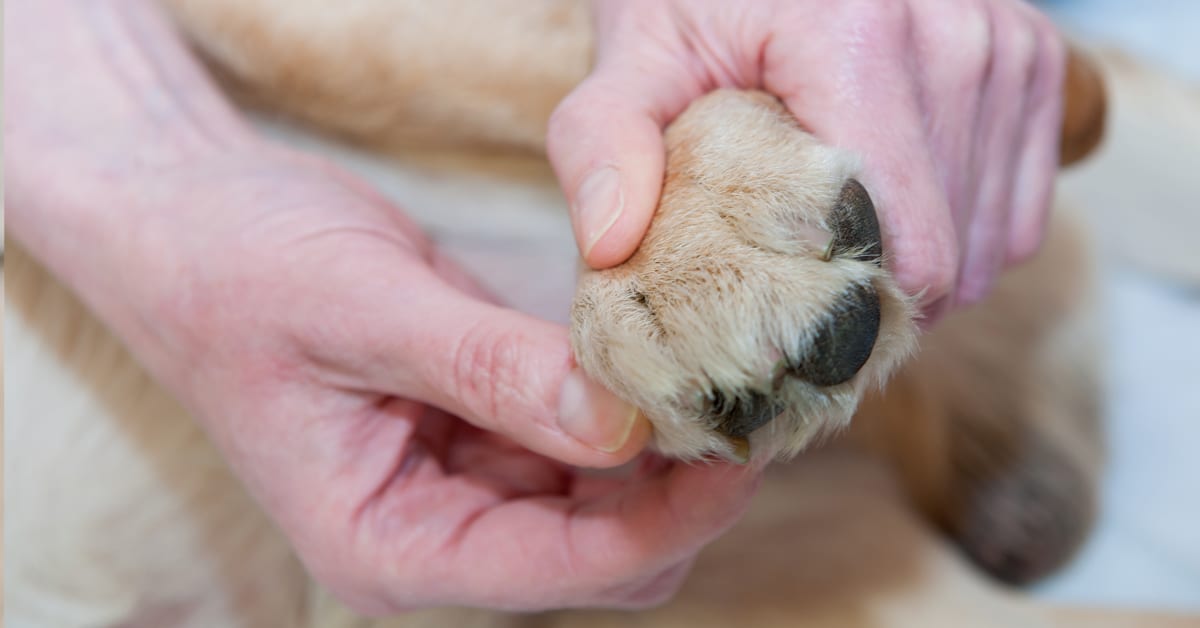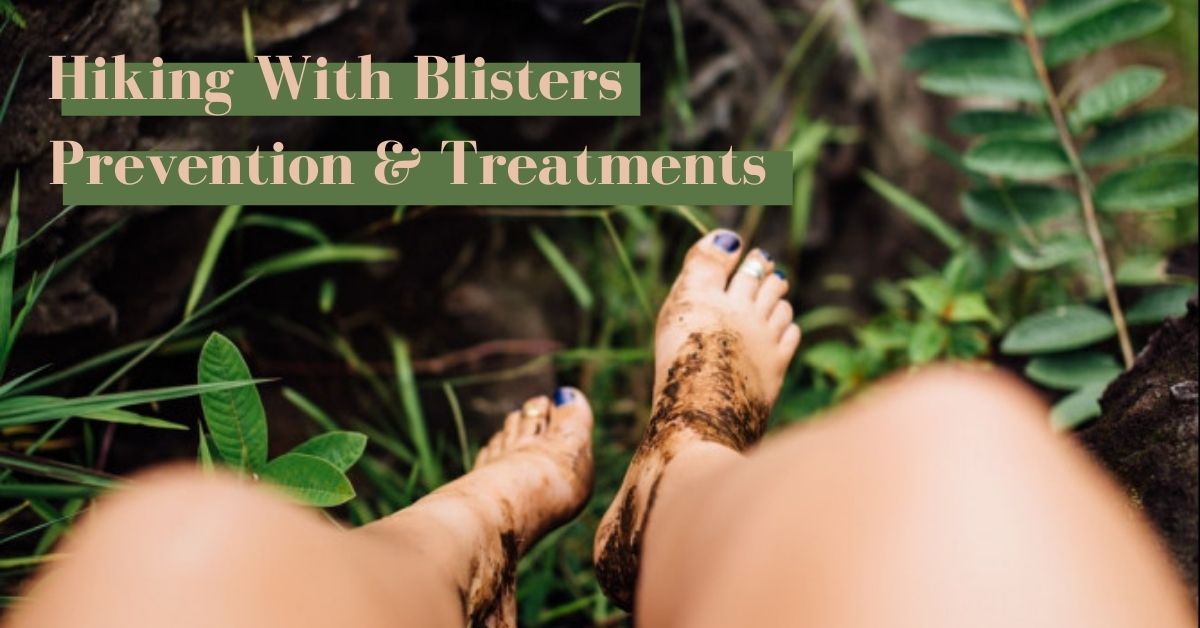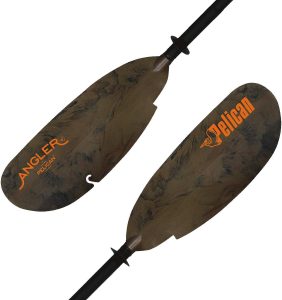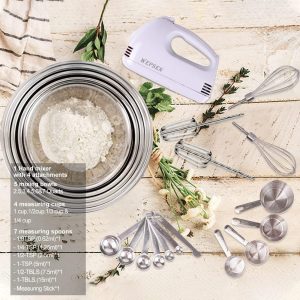Contents
- Anatomy Of A Dog Paw Pad
- Recognizing Dog Paw Pad Blisters
- Treating Dog Paw Pad Blisters
- Preventing Dog Paw Pad Blisters
- Keeping Dog Paw Pads Moisturized
- Proper Paw Pad Care In Different Seasons
- Choosing Dog-Friendly Footwear
- Supplements And Nutritional Support
- Activities To Strengthen Dog Paw Pads
- Managing Allergies And Skin Conditions
- Frequently Asked Questions On Dog Paw Pad Blister
- Conclusion
Dog paw pad blisters can be treated by cleaning the affected area and applying a dog-friendly paw balm. Dog paw pad blisters can occur due to excessive walking or rough terrain, causing irritation and discomfort for your furry companion.
Proper care and attention should be given to prevent infections and promote healing. It is essential to keep your dog’s paws clean and dry, inspect them regularly for any signs of irritation or blisters, and provide a comfortable environment for rest and recovery.
Additionally, consider using paw protectors or booties to shield the paws from potential damage. By following these steps, you can help your dog recover from paw pad blisters swiftly and maintain their overall paw health.
Anatomy Of A Dog Paw Pad
The anatomy of a dog paw pad includes several layers that protect the dog’s feet. However, blisters can occur on the paw pads due to excessive friction or heat, causing discomfort and pain for your furry friend. Proper care and treatment are necessary to promote healing and prevent further complications.
Structures Of The Dog Paw Pad
The paw pad is an essential part of a dog’s anatomy, serving multiple functions and providing protection for the delicate tissues beneath. Understanding the structures of the dog paw pad can help us appreciate the importance of keeping them healthy.
Here are the key components of a dog’s paw pad:
- Epidermis: The outermost layer of the paw pad, the epidermis, is tough and resilient, providing resistance to abrasion and injuries.
- Dermis: Beneath the epidermis lies the dermis, a network of blood vessels, nerves, sweat glands, and fat cells. It plays a crucial role in regulating temperature and providing sensitivity.
- Paw Pad Fat: The paw pad contains fat pads that act as shock absorbers, cushioning the impact during walking or running.
- Sensory Nerves: The paw pad is rich in sensory nerve endings, making it highly sensitive to touch, pressure, temperature, and pain.
- Carpal and Metacarpal Pads: Dogs possess unique carpal pads on their front paws and metacarpal pads on their rear paws. These specialized pads offer additional support and traction.
Importance Of Healthy Paw Pads For Dogs
Maintaining healthy paw pads is crucial for a dog’s overall well-being. Here’s why:
- Mobility: Healthy paw pads are essential for a dog’s mobility, allowing them to walk, run, and play without discomfort or pain.
- Protection: The thick layers of the paw pad protect the underlying tissues from excessive wear and tear, cuts, and infections.
- Temperature Regulation: The paw pad plays a significant role in a dog’s thermoregulation. It helps dissipate heat during hot weather and provides insulation during colder temperatures.
- Traction: A dog’s paw pads help them maintain traction on various surfaces, preventing slips and falls.
- Sensory Perception: The sensory nerves in the paw pad enable dogs to navigate their surroundings, providing crucial sensory information.
Common Issues With Dog Paw Pads
Unfortunately, dogs can encounter various issues related to their paw pads. Here are some common problems:
- Cracked or Dry Pads: Environmental factors, like extreme heat or cold, can cause the paw pads to dry out and crack, leading to discomfort and potential infections.
- Cuts and Abrasions: Sharp objects, rough surfaces, or even excessive physical activity can lead to cuts and abrasions on the paw pads.
- Burns or Blisters: Walking on hot surfaces, such as concrete or asphalt on a scorching day, can result in burns or blisters on the paw pads.
- Allergies: Dogs can develop allergies to certain chemicals, substances, or surfaces, causing irritation and inflammation on their paw pads.
- Infections: Bacteria, fungi, or parasites can infect the paw pads, leading to issues such as dermatitis or fungal infections.
Proper care, regular inspection, and prompt treatment of any paw pad issues are paramount to ensure the well-being and comfort of our furry friends.
Recognizing Dog Paw Pad Blisters
Dog paw pad blisters are a common issue that many pet owners face. It is important to recognize and treat these blisters promptly to prevent further discomfort and complications for your furry friend. Keep an eye out for redness, swelling, and limping, as these are signs of paw pad blisters that require attention.
Signs And Symptoms Of Paw Pad Blisters
Paw pad blisters can cause discomfort and pain for our furry companions. Recognizing the signs and symptoms of paw pad blisters is crucial in order to provide proper care and treatment. Here are some indicators to look out for:
- Limping or reluctance to walk: If you notice that your dog is limping or hesitant to put weight on a particular paw, it could be a sign of a blister forming on their paw pad.
- Redness and swelling: Blisters can cause inflammation and make the affected area appear red and swollen. Keep an eye out for any changes in the appearance of your dog’s paw pads.
- Pain or tenderness: Paw pad blisters can be painful, and your furry friend may display signs of discomfort or sensitivity when their paws are touched.
- Blisters or sores: Actual blisters or sores on the paw pads themselves are a clear indication of a paw pad blister. These may appear as raised, fluid-filled bumps or open wounds.
Understanding these signs and symptoms will enable you to promptly address your dog’s paw pad blisters and alleviate their discomfort.
Identifying The Causes Of Paw Pad Blisters
To effectively prevent and manage paw pad blisters, it is essential to understand the causes behind their development. The following factors can contribute to the formation of paw pad blisters:
- Excessive heat: Walking on hot surfaces, such as asphalt or sand, can lead to burns and blisters on your dog’s paw pads. Hot pavement should be avoided, especially during the scorching summer months.
- Rough terrain: Rough or abrasive surfaces, like gravel, rocks, or jagged paths, can irritate and damage your dog’s paw pads, potentially causing blisters.
- Chemical irritants: Contact with certain chemicals, such as household cleaners, lawn care products, or deicers, can irritate your dog’s paw pads and lead to blisters. Ensure your dog avoids walking on recently treated areas.
- Friction and pressure: Activities like excessive running, hiking, or prolonged walks on hard surfaces can cause friction, leading to blister formation. Additionally, ill-fitting boots or shoes may rub against the paw pads and cause blisters.
By recognizing these causes, you can take proactive steps to prevent paw pad blisters and keep your furry friend’s paws healthy.
Knowing When To Seek Veterinary Care
While minor paw pad blisters can often be treated at home, there are situations where it is important to seek veterinary care. Keep an eye out for the following indicators that warrant professional intervention:
- Severe or infected blisters: If your dog’s paw pad blisters are large, deep, or show signs of infection, such as pus, red streaks, or a foul smell, it is crucial to consult a veterinarian for appropriate treatment.
- Difficulty walking or persistent pain: If your dog’s mobility is significantly impaired or they continue to experience pain despite home remedies, veterinary assessment and intervention may be necessary.
- Allergic reactions or systemic symptoms: If your dog develops an allergic reaction, such as swelling around the face or difficulty breathing, or if they display other systemic symptoms alongside paw pad blisters, immediate veterinary attention is required.
Remember, your veterinarian is the best resource to provide comprehensive guidance and ensure your dog receives the appropriate care for their paw pad blisters.
Treating Dog Paw Pad Blisters
Treating dog paw pad blisters is crucial for your pet’s comfort. Regularly clean and disinfect the affected area, apply antibiotic ointment, and protect it with a dog paw pad protector or booties to aid healing and prevent further irritation.
If your furry friend has developed a blister on their paw pad, it’s important to provide them with proper treatment to alleviate discomfort and aid in healing. Here are the steps you can take to treat dog paw pad blisters:
Cleaning And Disinfecting The Blistered Area:
- Gently wash the blistered area with mild, pet-friendly soap and warm water.
- Pat the paw pad dry with a clean towel.
- Apply a pet-safe disinfectant solution to prevent infection.
- Avoid using hydrogen peroxide, as it can be too harsh and delay the healing process.
Applying A Protective Ointment Or Cream:
- After cleaning the area, apply a thin layer of an appropriate paw pad ointment or cream.
- Look for products specifically formulated for dog paw pads, with ingredients like aloe vera or vitamin E to soothe and protect the blistered area.
- Avoid using human lotions or creams, as they may contain ingredients that are toxic to dogs.
Using Bandages Or Boots For Added Protection:
- To shield the blister and prevent further irritation, consider using a dog-specific adhesive bandage or wrap to cover the affected area.
- Make sure to apply the bandage snugly but not too tight, allowing room for proper blood circulation.
- Alternatively, you can use dog boots or socks to provide a protective barrier while allowing your pup to move comfortably.
Remember, it’s crucial to monitor your furry companion’s paw pad blister for signs of infection, such as increased swelling, redness, or pus discharge. If you notice any of these symptoms or if the blister worsens or fails to improve, consult your veterinarian for further guidance.
By taking these steps, you can aid in your dog’s recovery and help them get back to their happy, playful selves in no time.
Preventing Dog Paw Pad Blisters
Protect your furry friend from painful blisters on their paw pads by following these tips and tricks. Ensure they have proper footwear, trim their nails regularly, and avoid harsh surfaces to keep their paws healthy and happy.
Regular Paw Pad Inspections And Maintenance
- It is essential to regularly inspect and maintain your dog’s paw pads to prevent blisters and other related issues. By taking proactive measures, you can ensure that your furry friend’s paw pads remain healthy and free from discomfort. Here are some key points to consider:
- Examine your dog’s paw pads on a regular basis, particularly after walks or outdoor activities.
- Look for any signs of redness, swelling, or irritation on the paw pads.
- Check for any cuts, abrasions, or blisters that may have formed.
- Gently clean the paw pads with a mild, pet-friendly cleanser to remove any dirt or debris.
- Apply a pet-safe moisturizer or paw pad balm to keep the skin hydrated and prevent dryness and cracking.
- Trim your dog’s nails regularly to prevent them from causing excessive pressure on the paw pads.
- Consult with your veterinarian if you notice any persistent issues or signs of infection.
Appropriate Walking Surfaces And Conditions
- Providing your dog with suitable walking surfaces and conditions plays a crucial role in preventing paw pad blisters. Certain surfaces can be too hot or abrasive, causing discomfort and potential injuries. Consider the following tips:
- Opt for grassy areas or dirt trails for walks, as these surfaces are generally softer and less likely to cause friction or burns to the paw pads.
- Avoid walking your dog on concrete or asphalt during hot weather, as these surfaces can become scorching and result in painful burns on the paw pads. Stick to shaded areas and walk during cooler parts of the day.
- Keep an eye out for sharp objects like broken glass, stones, or thorns that could harm your dog’s paw pads. Inspect the walking path before starting your walk.
- During winter months, protect your dog’s paw pads from harsh cold, ice, and salt by using booties or paw wax.
- Gradually increase the duration and intensity of walks to allow your dog’s paw pads to build up resistance over time.
Avoiding Hot Pavement And Rough Terrain
- It is crucial to avoid hot pavement and rough terrains to prevent dog paw pad blisters. Dogs are susceptible to burns and injuries on their sensitive paw pads if exposed to extreme conditions. Consider the following points:
- Test the pavement temperature before taking your dog for a walk by placing the back of your hand on the surface for a few seconds. If it feels too hot for you, it is definitely too hot for your furry friend.
- Plan walks during cooler times of the day, such as early morning or late evening, to avoid the heat of the day.
- If you must walk on hot pavement, consider using protective booties designed to shield your dog’s paw pads from the heat.
- Rough terrains like rocky or gravel paths can cause excessive friction and abrasions on the paw pads. Stick to smoother surfaces to prevent injuries.
- If your dog loves outdoor adventures and encounters rough terrains frequently, consider using paw pad protectors or protective balms to minimize the risk of blisters and injuries.
Remember, proactive measures play a vital role in preventing dog paw pad blisters. By inspecting and maintaining the paw pads regularly, ensuring appropriate walking surfaces and conditions, and avoiding hot pavement and rough terrains, you can promote your furry friend’s paw pad health and keep them comfortable during their outdoor adventures.
Keeping Dog Paw Pads Moisturized
Properly moisturizing your dog’s paw pads is crucial for preventing blisters and discomfort. Regular application of paw balms or providing a paw soaking routine can help keep the paw pads hydrated and healthy.
The Importance Of Moisture For Paw Pad Health:
- Keeping your dog’s paw pads moisturized is essential for maintaining their overall health and preventing problems such as dryness, cracking, and blistering. Here’s why moisture matters:
- Paw pads are constantly exposed to various surfaces, including hot asphalt, rough terrain, and harsh weather conditions. Moisturized paw pads act as a protective barrier, reducing the risk of injuries and discomfort.
- Adequate moisture levels help to keep the paw pads soft and supple, which is important for shock absorption and weight distribution. This can prevent undue strain and reduce the risk of orthopedic issues in your furry friend.
- Moisture also plays a crucial role in maintaining the skin’s elasticity and health. When the paw pads become excessively dry, they can crack, leading to pain, inflammation, and possible infection.
- Dry paw pads can be an uncomfortable and distressing experience for your dog. By ensuring proper moisture levels, you can contribute to their overall well-being and happiness.
Safe And Effective Moisturizing Techniques:
- To keep your dog’s paw pads moisturized, it’s essential to use safe and effective techniques. Here are a few proven approaches:
- Regularly inspect the paw pads for any signs of dryness or cracking. Catching the issue early on can prevent further damage.
- Provide your dog with a balanced and nutritious diet. Proper nutrition is key to maintaining healthy skin, including the paw pads.
- Apply paw balms or waxes specifically formulated for dogs. These products help to lock in moisture and provide a protective layer against environmental factors.
- Use pet-friendly moisturizing creams or lotions containing natural ingredients like shea butter or coconut oil. These can soothe and hydrate the paw pads effectively.
- Consider using paw protectors or booties during extreme weather conditions or when walking on abrasive surfaces. These can shield the paw pads from excessive wear and tear.
Natural Remedies For Dry Or Cracked Paw Pads:
- If you prefer natural remedies, there are several options available to moisturize your dog’s dry or cracked paw pads:
- Coconut oil: Apply a thin layer of coconut oil to the paw pads and massage gently. Coconut oil contains healthy fats that penetrate the skin, providing moisture and nourishment.
- Olive oil: Similar to coconut oil, olive oil can be applied topically to the paw pads to hydrate and soothe. It has the added benefit of anti-inflammatory properties.
- Aloe vera gel: Pure aloe vera gel offers cooling relief and moisturization for dry or cracked paw pads. Make sure to use a product without added chemicals or fragrances.
- Homemade paw balm: Create your own paw balm using natural ingredients like shea butter, beeswax, and vitamin E oil. Melt the ingredients together, allow them to cool, and apply to the paw pads.
- Oatmeal soak: Soaking your dog’s paws in a mixture of finely ground oatmeal and warm water can provide soothing relief and help moisturize the paw pads.
Remember, it’s essential to consult with your veterinarian before trying any new remedies, especially if your dog’s paw pads are severely dry or if there are signs of infection.
Proper Paw Pad Care In Different Seasons
Proper paw pad care is crucial in all seasons to prevent dog paw pad blisters. Regularly moisturize the pads in dry seasons and protect them from hot surfaces in summer, while keeping them clean and dry in wet and snowy conditions.
Dog Paw Pad Blister:
Taking care of your furry friend’s paw pads is essential to ensure their overall well-being. Different seasons demand different levels of care and attention to protect your dog’s delicate paw pads. We will explore the necessary steps you can take to provide proper paw pad care throughout the year.
Protecting Dog Paw Pads During Winter:
Winter brings with it harsh weather conditions that can be tough on your dog’s paw pads. Here are some measures you can take to keep their paws safe and healthy during this chilly season:
- Apply paw wax or a protective balm to create a barrier between the paw pads and the salt or chemical agents used to melt ice and snow. This will prevent their paws from getting irritated and drying out.
- Use dog booties or paw covers to give extra insulation and shield your pup’s paws from freezing temperatures.
- After walks, clean your dog’s paws with a warm damp cloth to remove any salt, ice, or chemicals that may have accumulated. This will prevent their paw pads from becoming dry and cracked.
Preventing Paw Pad Burns In Summer:
Summer heat can be intense and can lead to paw pad burns if proper precautions are not taken. Follow these tips to protect your dog’s paw pads during the hot summer months:
- Avoid walking your dog on hot pavement or sand during peak hours of the day when the ground is at its hottest. Opt for shaded areas or grassy locations instead.
- Apply a dog-friendly paw balm or moisturizer to keep the paw pads hydrated and prevent them from drying out in the scorching heat.
- Consider using dog booties designed specifically for summer to shield your pet’s paws from excessive heat.
Adjusting Care Routines For Different Climates:
Just like humans, dogs can find it challenging to adjust to different climates. Whether you live in a place with extreme cold or scorching heat, it’s important to adapt your paw pad care routine accordingly. Here are some general guidelines to consider:
- In colder climates, be mindful of the temperature and duration of outdoor activities. Longer exposure to the cold can increase the risk of frostbite and paw pad damage. Provide extra protection by using paw wax, booties, or paw covers.
- In hotter climates, always check the ground temperature before taking your dog for a walk. Paw pad burns can occur quickly on hot surfaces. Opt for early morning or late evening walks when the ground is cooler, and use protective paw balms or booties.
Remember, your furry friend relies on you to keep their paw pads healthy and pain-free year-round. By taking proactive steps and adjusting care routines based on the seasons, you can ensure that your dog’s paw pads remain strong and resilient in any weather conditions.
Choosing Dog-Friendly Footwear
Dog paw pad blisters can be painful for our furry friends. When choosing dog-friendly footwear, opt for shoes with durable soles and comfortable materials to protect their paws and prevent blister formation.
When it comes to protecting your furry friend’s paws, dog boots can be a game-changer. Whether it’s rugged terrains, scorching hot pavements, or extreme weather conditions, dog boots provide the much-needed barrier between your pup’s sensitive paw pads and the elements.
But with so many options available, choosing the right footwear for your canine companion can be overwhelming. Here’s a guide to help you select the perfect dog boots and train your pup to wear them comfortably.
When To Consider Using Boots For Dogs:
- Extreme temperatures: Dog boots provide insulation against freezing temperatures, preventing frostbite during winter months.
- Hot pavements: As asphalt can heat up quickly, especially during summer, dog boots shield your dog’s paw pads from burns and blisters.
- Rough terrains: If you and your pup enjoy adventurous hikes or off-road trails, boots offer necessary protection against sharp rocks, thorns, and other rough surfaces.
- Chemical exposure: Some cleaning agents or de-icing salts can irritate and damage your dog’s paw pads. Boots act as a barrier against harmful substances.
- Injury recovery: If your dog has undergone paw surgery or is recovering from an injury, boots can help protect the affected area and prevent further damage.
Selecting The Right Dog Boots For Paw Pad Protection:
- Size and fit: Measure your dog’s paw size accurately and choose boots that snugly fit their feet. Ill-fitting boots can cause discomfort and hinder mobility.
- Material and durability: Look for boots made of sturdy, water-resistant materials that can withstand wear and tear. Additionally, ensure the soles provide good traction to prevent slips.
- Breathability: Opt for boots with breathable fabric to allow proper airflow and prevent moisture buildup, which can lead to bacterial or fungal infections.
- Closure system: Consider boots with secure fastening mechanisms such as Velcro straps or adjustable buckles for a snug and customizable fit.
- Reviews and recommendations: Read customer reviews and seek recommendations from fellow dog owners or veterinarians to gain insights into the performance and durability of different boot options.
Training A Dog To Wear Boots Comfortably:
- Start slow: Introduce boots gradually by letting your dog sniff and get used to them before attempting to put them on.
- Positive reinforcement: Give treats and praise when your dog shows a positive response to the boots. Associate wearing boots with something enjoyable.
- Gradual wearing: Begin with short periods of wearing boots indoors, gradually increasing the duration as your dog becomes more comfortable.
- Practice walking: Once your dog is accustomed to wearing boots, take them for short walks in a familiar environment to help them adjust to the sensation of walking with boots on.
- Don’t rush: Some dogs may take longer than others to adapt to boots. Be patient and don’t force your pup if they show signs of fear or discomfort. With time and positive reinforcement, most dogs can learn to wear boots comfortably.
Remember, protecting your dog’s paw pads is essential for ensuring their overall well-being. With the right dog boots and proper training, you can provide your furry friend with the necessary paw pad protection they deserve. So, lace up those boots and embark on exciting adventures with your pooch, worry-free!
Supplements And Nutritional Support
Support your dog’s paw pad health and prevent blisters with supplements and nutritional support. Enhance their paw’s resilience and comfort naturally.
The Role Of Proper Nutrition In Maintaining Healthy Paw Pads
Maintaining healthy paw pads is essential for your dog’s overall well-being. Proper nutrition plays a vital role in promoting the health and resilience of their paw pads. A well-balanced diet can help ensure that your furry friend’s paw pads remain strong and resistant to blisters and other injuries.
By providing the right nutrients, you can support the regeneration of tissue and prevent dryness and cracking. Supplements and nutritional support can also be beneficial in enhancing paw pad health.
Recommended Supplements For Paw Pad Health
Supplements can provide additional support to keep your dog’s paw pads in optimal condition. Consider incorporating the following supplements into their diet:
- Omega-3 fatty acids: These essential fatty acids have anti-inflammatory properties and can improve skin and paw pad health. Look for supplements that contain fish oil or flaxseed oil.
- Vitamin E: This vitamin acts as an antioxidant and aids in tissue repair. It can help prevent cracked and dry paw pads. Talk to your veterinarian about the appropriate dosage for your dog.
- Biotin: Biotin is a B-vitamin that supports the growth and maintenance of healthy skin and nails. It can contribute to the strength and resilience of your dog’s paw pads.
- Zinc: This essential mineral is crucial for skin health and may aid in the healing of any minor paw pad abrasions or blisters. Consult your veterinarian for the correct dosage of zinc for your dog.
- Collagen: Collagen supplements can promote tissue repair and improve the overall health of your dog’s paw pads. Look for high-quality collagen supplements formulated for pets.
Consulting With A Veterinarian For Appropriate Dietary Adjustments
When it comes to your dog’s nutrition, it is essential to consult with a veterinarian. They will consider your dog’s specific needs, age, and any underlying health conditions when recommending dietary adjustments or supplements. A professional opinion will ensure that the nutritional support provided is appropriate for your dog’s paw pad health.
Remember, maintaining paw pad health requires a holistic approach, including a nutritious diet, proper hydration, regular paw pad care, and, if necessary, the inclusion of supplements. By prioritizing your dog’s paw pad health, you can help prevent discomfort and keep them active and happy for years to come.
Activities To Strengthen Dog Paw Pads
Strengthen your dog’s paw pads with targeted activities to prevent blister formation and promote overall paw health. Explore exercises such as paw massages, walking on different surfaces, and using paw balms to keep your furry friend’s paws in top condition.
Your furry friend’s paw pads serve as a protective barrier, allowing them to navigate various terrains comfortably. However, if your dog’s paw pads are not in optimal condition, they may be susceptible to blisters or injuries. To enhance the resilience of your dog’s paw pads, consider incorporating a range of exercises and activities into their routine.
By gradually increasing intensity and duration, you can help build stronger paw pads for your canine companion.
Exercise And Activities To Build Paw Pad Resilience:
Regular exercise is essential for keeping your dog physically fit and mentally stimulated. By engaging in specific exercises and activities, you can also strengthen your dog’s paw pads. Here are some strategies you can try:
- Walking and hiking: Regular walks on different terrains, such as pavement, grass, and sand, can provide a natural way to condition your dog’s paw pads. Gradually increase the duration and intensity of the walks to help them build endurance.
- Fetch and retrieve games: Encourage your furry friend to chase after toys or balls on soft surfaces like grass or sand. The running and stopping actions involved in these games aid in toughening their paw pads.
- Obstacle courses: Set up an obstacle course using objects like ramps, tunnels, and low jumps to challenge your dog’s coordination and agility. These activities can strengthen their paw pads while keeping them mentally engaged.
- Swimming: If your dog enjoys the water, swimming is an excellent low-impact exercise that can also provide paw pad conditioning. The resistance of the water can help build paw pad endurance, while the coolness of the water soothes any minor irritations.
Paw Pad Strengthening Exercises And Games:
In addition to regular exercise, you can specifically target your dog’s paw pads with strengthening exercises and games. Here are some activities you can incorporate into their routine:
- Paw massages: Gently massage your dog’s paw pads using your fingertips. This stimulates blood circulation and helps toughen the paw pads. You can also apply paw pad balms or paw moisturizers to keep the pads supple.
- Balance exercises: Encourage your dog to stand on unstable surfaces like balance discs or pillows. This engages their paw muscles and helps improve stability and strength.
- Tug-of-war: Engage in a friendly game of tug-of-war with your dog using a rope toy. This activity not only strengthens their jaw muscles but also engages the muscles in their paws and forelimbs as they grip and pull.
- Paw puzzles: Provide your dog with interactive toys or puzzles that require them to manipulate objects with their paws. This can help improve dexterity and develop stronger paw pads.
Remember to always monitor your dog during these activities and adjust the intensity and duration based on their individual capabilities. If you notice any signs of discomfort or excessive paw pad wear, consult with your veterinarian. With consistent effort and patience, your pup’s paw pads will become more resilient and ready for any adventure that comes their way.

Credit: vetericyn.com
Managing Allergies And Skin Conditions
Dog paw pad blisters can cause discomfort for your pet. Learn how to manage and treat this common condition for healthier paws.
Dog Paw Pad Blister
Is your furry friend suffering from allergies or skin conditions affecting their paw pads? Don’t fret! Managing these issues is crucial for your dog’s well-being. In this section, we will explore how to identify, treat, and prevent allergies and skin conditions that may be causing discomfort to your dog’s precious paw pads.
Identifying Allergies And Skin Conditions Affecting The Paw Pads
- Redness and inflammation: If your dog’s paw pads appear red and inflamed, it could be a sign of an allergic reaction or dermatitis.
- Persistent itching: Excessive scratching and licking of the paw pads can indicate an allergy or skin irritation.
- Cracked and dry skin: Dryness and cracks on the paw pads may be a result of allergies or environmental factors.
- Blisters and sores: If you notice blisters or sores on your dog’s paw pads, it could be due to contact dermatitis or an underlying skin condition.
- Excessive paw chewing: Constant chewing or nibbling at the paw pads might suggest an allergic reaction or sensitivity.
Treating And Managing Allergies And Skin Conditions
- Consult your veterinarian: If you suspect your dog has allergies or skin conditions affecting their paw pads, it’s essential to seek professional guidance.
- Medications and ointments: Your veterinarian may prescribe antihistamines, topical creams, or ointments to alleviate symptoms and promote healing.
- Regular paw pad care: Maintaining proper hygiene is crucial. Clean your dog’s paw pads regularly with a gentle, hypoallergenic cleanser to reduce irritation.
- Use paw balms: Applying a protective paw balm can help soothe and moisturize the paw pads, reducing the risk of further irritation.
- Allergen avoidance: Identify and eliminate potential allergens from your dog’s environment, such as certain foods, plants, or harsh cleaning products.
- Consider dietary changes: In some cases, switching to a hypoallergenic or limited ingredient diet can help manage allergies and improve paw pad health.
Preventive Measures To Minimize Allergic Reactions
- Keep your dog’s paws clean: Regularly wipe your dog’s paw pads after walks to remove potential allergens and dirt.
- Provide a comfortable resting area: Ensure your dog’s bedding is clean and free of irritants that could trigger allergies or skin reactions.
- Avoid chemical exposure: Opt for pet-friendly cleaning products and avoid using harsh chemicals on your dog’s paws or surrounding areas.
- Monitor outdoor conditions: During allergy seasons, limit your dog’s exposure to pollen, molds, and other outdoor allergens.
- Regular veterinary check-ups: Schedule routine visits to your veterinarian to monitor your dog’s overall health and address any potential paw pad issues promptly.
By effectively identifying, treating, and taking preventive measures, you can help your furry companion find relief from allergies and skin conditions affecting their sensitive paw pads. Remember, consulting with your veterinarian is vital to ensure the best possible care for your furry friend.
Frequently Asked Questions On Dog Paw Pad Blister
How Do You Treat A Blister On A Dog’S Paw?
To treat a blister on a dog’s paw, start by gently cleaning the area with warm water and mild soap. Next, apply a small amount of an antiseptic solution to prevent infection. Protect the blister by placing a non-stick sterile pad over it and securing it with a bandage or self-adhesive wrap.
Ensure that your dog doesn’t lick or chew the blister, as this can worsen the condition. If necessary, use an Elizabethan collar or a bitter-tasting spray to discourage licking. Keep an eye on the blister for any signs of infection, such as increased redness, swelling, or pus.
If the blister doesn’t improve or becomes worse, consult a veterinarian for further treatment. Remember, it’s important to provide your furry friend with a clean and comfortable environment throughout the healing process.
What Causes Blisters On Dog Paws?
Blisters on a dog’s paws can be caused by several factors. Friction from walking or running on rough surfaces, hot pavement, and abrasive materials can lead to blisters. Additionally, extreme temperatures, such as hot pavement in the summer or cold snow in the winter, can also cause blister formation.
Allergies, irritants, or chemicals from grass, detergents, or cleaning agents can further contribute to blister development. Furthermore, long walks or exercise without proper conditioning can put excessive strain on the paws, leading to blisters. Prevention is crucial in avoiding paw blisters and can be achieved by using protective booties or applying paw balms.
Regularly inspecting and cleaning paws, keeping nails trimmed, and providing rest breaks during walks can also help prevent blisters. If blisters form, it is important to seek veterinary attention to prevent infection and promote healing.
How Long Does It Take For A Dog’S Paw Pad Blister To Heal?
A dog’s paw pad blister usually takes about 1 to 2 weeks to heal completely.
Will A Dog’S Paw Pad Heal On Its Own?
Yes, a dog’s paw pad can heal on its own. With proper care and rest, paw pad injuries can often heal naturally. Ensure that your dog avoids excessive walking or running to allow the paw pad time to heal. Keep the affected area clean and dry to prevent infection.
You can also apply a dog-safe topical ointment or balm to promote healing and provide relief. It’s important to monitor the healing progress closely. If the injury worsens, shows signs of infection, or doesn’t improve within a reasonable time frame, consult a veterinarian for further evaluation and treatment.
Remember to always prioritize your dog’s comfort and well-being when it comes to their paw pad health.
Conclusion
Overall, caring for your dog’s paw pad blisters is crucial to their comfort and well-being. By being proactive and regularly checking their paws, you can catch any issues early on and take appropriate action. Providing a clean and safe environment, ensuring proper hydration, using paw balms or protective boots, and seeking veterinary advice when necessary are essential in preventing and treating paw pad blisters.
Remember to provide your furry friend with sufficient exercise and mental stimulation to keep them happy and engaged. Taking these steps will not only prevent painful blisters but also promote overall paw health. So, prioritize your dog’s paw pad care and watch them walk and run with confidence and comfort.
Your beloved furry friend will thank you for it.
{ “@context”: “https://schema.org”, “@type”: “FAQPage”, “mainEntity”: [ { “@type”: “Question”, “name”: “How do you treat a blister on a dog’s paw?”, “acceptedAnswer”: { “@type”: “Answer”, “text”: “To treat a blister on a dog’s paw, start by gently cleaning the area with warm water and mild soap. Next, apply a small amount of an antiseptic solution to prevent infection. Protect the blister by placing a non-stick sterile pad over it and securing it with a bandage or self-adhesive wrap. Ensure that your dog doesn’t lick or chew the blister, as this can worsen the condition. If necessary, use an Elizabethan collar or a bitter-tasting spray to discourage licking. Keep an eye on the blister for any signs of infection, such as increased redness, swelling, or pus. If the blister doesn’t improve or becomes worse, consult a veterinarian for further treatment. Remember, it’s important to provide your furry friend with a clean and comfortable environment throughout the healing process.” } } , { “@type”: “Question”, “name”: “What causes blisters on dog paws?”, “acceptedAnswer”: { “@type”: “Answer”, “text”: “Blisters on a dog’s paws can be caused by several factors. Friction from walking or running on rough surfaces, hot pavement, and abrasive materials can lead to blisters. Additionally, extreme temperatures, such as hot pavement in the summer or cold snow in the winter, can also cause blister formation. Allergies, irritants, or chemicals from grass, detergents, or cleaning agents can further contribute to blister development. Furthermore, long walks or exercise without proper conditioning can put excessive strain on the paws, leading to blisters. Prevention is crucial in avoiding paw blisters and can be achieved by using protective booties or applying paw balms. Regularly inspecting and cleaning paws, keeping nails trimmed, and providing rest breaks during walks can also help prevent blisters. If blisters form, it is important to seek veterinary attention to prevent infection and promote healing.” } } , { “@type”: “Question”, “name”: “How long does it take for a dog’s paw pad blister to heal?”, “acceptedAnswer”: { “@type”: “Answer”, “text”: “A dog’s paw pad blister usually takes about 1 to 2 weeks to heal completely.” } } , { “@type”: “Question”, “name”: “Will a dog’s paw pad heal on its own?”, “acceptedAnswer”: { “@type”: “Answer”, “text”: “Yes, a dog’s paw pad can heal on its own. With proper care and rest, paw pad injuries can often heal naturally. Ensure that your dog avoids excessive walking or running to allow the paw pad time to heal. Keep the affected area clean and dry to prevent infection. You can also apply a dog-safe topical ointment or balm to promote healing and provide relief. It’s important to monitor the healing progress closely. If the injury worsens, shows signs of infection, or doesn’t improve within a reasonable time frame, consult a veterinarian for further evaluation and treatment. Remember to always prioritize your dog’s comfort and well-being when it comes to their paw pad health.” } } ] }










